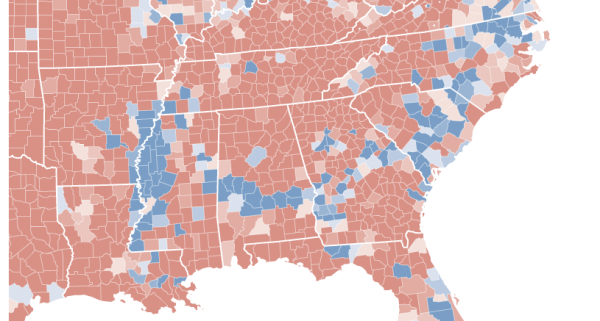
The image above shows the outcome of the 2008 presidential elections in the American South. Counties that swung repugican are in red. Counties that swung Democratic are in blue. The result shows more than just the modern political landscape. In fact, the blue counties trace the outline of an ancient coastline, from a time when much of the South and Central-West parts of North America were inundated with shallow, tropical seas.
I love this article by Dr. M at the Deep Sea News blog, which explains the geologic history of these oceans and explains why an ancient sea would affect modern politics.
During the Cretaceous, 139-65 million years ago, shallow seas covered much of the southern United States. These tropical waters were productive–giving rise to tiny marine plankton with carbonate skeletons which overtime accumulated into massive chalk formations. The chalk, both alkaline and porous, lead to fertile and well-drained soils in a band, mirroring that ancient coastline and stretching across the now much drier South. This arc of rich and dark soils in Alabama has long been known as the Black Belt.Read the rest of the story at Deep Sea News
...Over time this rich soil produced an amazingly productive agricultural region, especially for cotton. In 1859 alone a harvest of over 4,000 cotton bales was not uncommon within the belt. And yet, just tens of miles north or south this harvest was rare. Of course this level of cotton production required extensive labor.

No comments:
Post a Comment